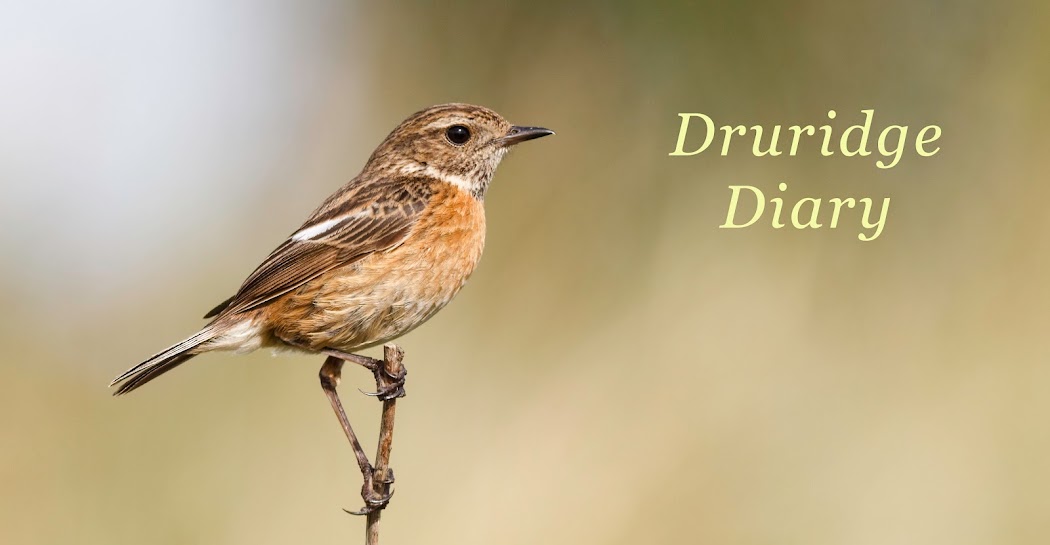Well that's 2020 over and done with. Whilst it's been a awful year for most people due to the ongoing Coronavirus pandemic it's actually been quite a good year for birds on the patch.
Despite the 'hard-lockdown' that kept me away from the patch for the best part of two months I've smashed my personal year list total, which has stood at 174 for a while now and has been achieved in three years, with a total of 179 species for 2020.
So why such a good year this year?
I only added two new species to my patch list year (Great Reed Warbler in June and Blyth's Reed Warbler in October) so it wasn't lots of new species (like 2017) that did it. Even though it caused me to stay away from the patch for nearly two months, I think COVID-19 has been indirectly responsible for the higher list. Working from home due to the outbreak has given me more time on the patch and as the saying goes 'Time spent in the field = birds'. I hardly missed a morning in the summer and autumn, reverting to lunchtime visits as the days shortened. Add a good autumn and some superb seawatching sessions to more time on the patch and there you have it!
I know that I've missed at least three species - Hoopoe during lockdown that would've been a patch tick, Cattle Egret which I saw at Bells Farm as I drove home from the patch and should've turned around for and a Great Egret which briefly appeared on the Budge fields. A chap called Harrison on eBird has recorded five species that I've not seen in 2020 - A Jay(!!) and three Collared Doves in July, two Yellowhammers in June and Cetti's Warbler and Bearded Tit in March - the latter would be a patch tick for me and is overdue.
I've busted a gut since I finished work for Christmas to reach 180 but I'm happy with 179. Missing species this year include Collared Dove (for the second year), Merlin, Yellowhammer, Storm Petrel and Grey Plover amongst the commonly occurring species.
As well as the two additions, other rare/scarce highlights have included Tundra Bean Goose, Black-necked Grebe, Balearic Shearwater, Long-tailed Skua (several), White-rumped Sandpiper, Pectoral Sandpiper, Grey Phalarope, Sabine's Gull and Lapland Bunting.
I've had two long sessions on the patch in the last couple of days, covering it all. I think there's been a cold-weather movement which has resulted in an influx of thrushes - I had a record count of 14 Mistle Thrushes in the field north of the Coal Road yesterday and a couple this morning by the farm. Fieldfares were in the bushes this morning and there's more Song Thrushes about too.
 |
| Mistle Thrush at Druridge Farm |
 |
| Male Blackbird, feeding in the gloom by the Budge hide. |
After seeing very few Pink-footed Geese during December, suddenly there are lots. Janet and I saw at least 5-6000 in one group this morning, circling around before coming in to land in the fields behind Bell's Pond. Tonight from the dunes, at least 5000 flew south and 3-3500 flew north (there may have been some recirculation but there are a lot of geese about.
 |
| Some of the pink-foots coming in to land this morning - they literally filled the sky |
The light was stunning at times today, between spells of cloud and some crispy, cold days have provided some nice photo opportunities to end the year.
 |
| Artistic like - silhouetted curlews and wind turbines |
 |
| And without the turbines |
 |
| Looking west across the Big Pool this morning |
 |
| Looking south down the Bay this evening |
 |
| Looking east across the Big Pool yesterday |
 |
| Drake Goldeneye taking off |
 |
| In-coming Curlew |
And here is the sun setting over the patch for the last time this year. It just remains for me to wish you everyone who reads this a healthy and happy 2021 - and good birding! Tomorrow it starts all over again.
 |
| The sun sets on 2020 from Druridge Links |


















